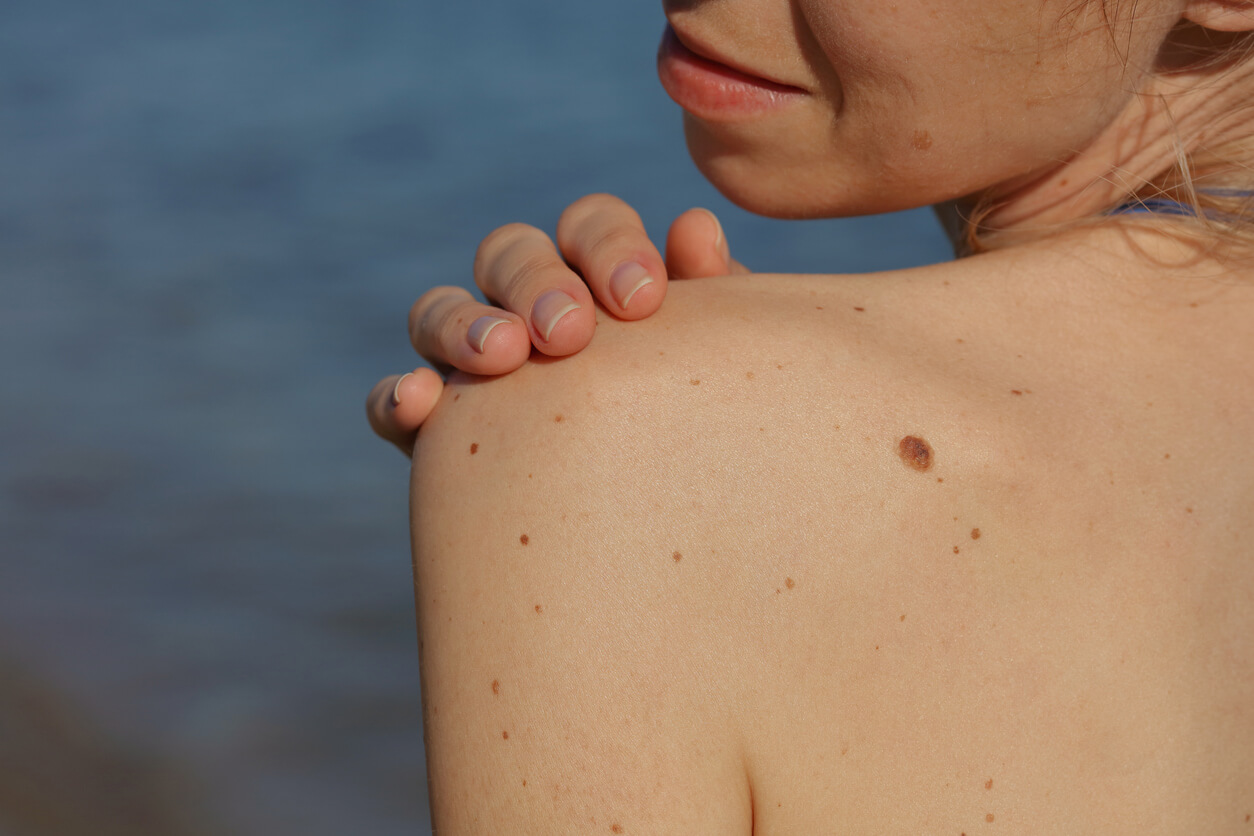Most people have moles on their skin. Moles are referred to by the medical community as nevi, and a nevus (singular mole) forms when melanocytes – cells that produce melanin, which gives skin its color – grow in small clusters or clumps. This results in moles that are usually brown or flesh-colored. You will usually find moles in places on the body that gets sunlight.
Moles usually appear in early childhood. A mole can go through changes, and some eventually disappear over time.
Let’s talk about the different types of moles, how they are distinguished from each other, and where you can go in the Greater Athens area for outstanding dermatology care.
Different Mole Types
There are three common types of moles:
Common Nevi
These normal moles are small, have an even color (usually tan, brown, or pink), and are round or have an oval shape. The average person has from 10 to 40 common nevi on their skin. These moles rarely become cancerous.
Congenital Nevi
These are moles that you’re born with, and they are believed to develop due to a genetic mutation. Congenital moles that are large (more than eight millimeters in diameter) have a higher risk of developing into melanoma, which is the most fatal form of skin cancer. For this reason, these moles need to be monitored by a skilled dermatologist.
Dysplastic Nevi or Atypical Moles
These are large or unusual-looking moles. They can grow to the size of a pencil eraser and are also irregularly shaped and uneven in color.
The center of the mole may be darker in color than the outer edges. People who have more than 100 moles on their body are likely to have dysplastic nevi. Having this type of mole increases your risk of developing melanoma, therefore moles of this type should be monitored.
When Does a Mole Warrant a Visit to the Dermatologist?
Most moles are harmless and remain that way, appearing only as beauty marks. However, moles can be a sign of an abnormality, especially if they occur after the age of 30. Changes to a mole should be evaluated by a dermatologist, as they may indicate skin cancer.
You should familiarize yourself with all the moles on your body and check them regularly for any changes. Be suspicious if old or new moles on your skin have the following ABCDE characteristics:
- Asymmetrical – The halves do not match and appear uneven
- Borders are irregular – The edges of the mole are jagged rather than round
- Color – Uneven color within the mole
- Diameter – The mole measures over 6 millimeters across
- Evolving – The mole is growing in size or changing in shape or color
If you notice any one of these changes to any of your moles, make an appointment with a dermatologist as soon as possible.
Skin Mole Checkup in the Greater Athens Area
If you are concerned about a changing mole or you want to make sure your skin stays healthy and cancer-free, see a dermatologist at Georgia Skin Cancer & Aesthetic Dermatology. Our compassionate physicians will conduct a thorough skin and mole check, and they will show you how to do checks at home every month.
For any questions or to schedule an appointment, call our dermatology clinic in Athens today at (706) 543-5858 or fill out our convenient appointment request form online now. We look forward to serving you!
